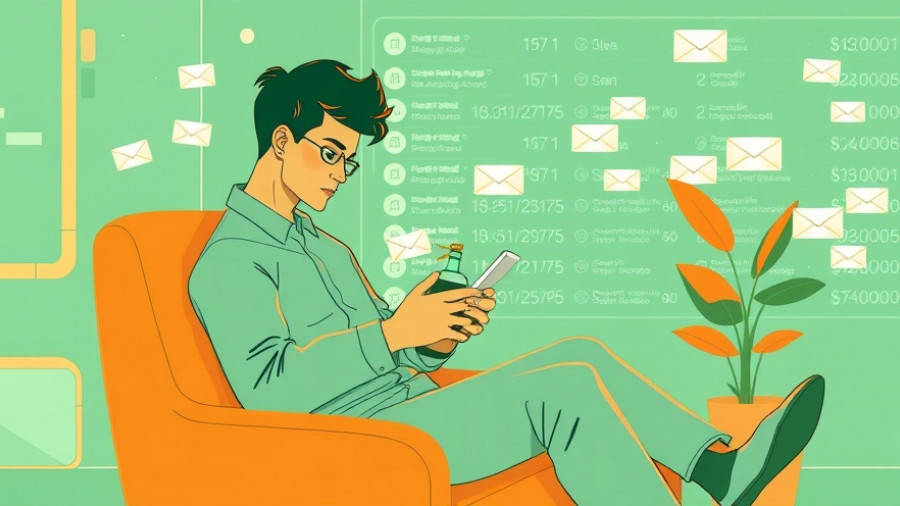
The Newsletter Renaissance: Key Findings from HubSpot’s 2025 Report
Newsletters are experiencing a resurgence in 2025, fueled by advances in technology and changing consumer preferences. HubSpot’s recent report, surveying over 400 newsletter professionals, unveils essential insights into why newsletters are back in vogue and how they are evolving into powerful marketing tools.
The Rise of AI in Newsletter Strategies
AI's transformative role in digital marketing cannot be overstated. According to the HubSpot report, 28% of newsletter creators are leveraging AI for brainstorming, while 25% employ it for actual content creation. This integration not only streamlines processes but also enhances creativity and efficiency, allowing creators to save valuable time — up to three hours a week. The advantages of AI in newsletter campaigns are echoed in parallel findings from other studies, where hyper-personalization — delivering tailored content to subscribers — is no longer optional; it's a necessity.
Hyper-Personalization: The New Norm
As competition intensifies in inboxes, hyper-personalization emerges as a vital strategy. Personalized newsletters lead to higher engagement rates, with brands that understand subscriber preferences seeing significant benefits. This concept extends beyond addressing recipients by name; it includes crafting content tailored to their interests, behaviors, and previous interactions. Implementing advanced analytics tools helps marketers identify and segment their audience, ensuring that each newsletter resonates. This commitment to personalization is crucial as 55% of professionals believe earning revenue from newsletters will become increasingly challenging by 2030.
Content Strategies That Work
Understanding what content works is critical for driving engagement. The report highlights that 45% of newsletter pros focus on news or trends related to their platforms, while 30% emphasize generative AI insights. Additionally, original data and personal opinions have proven effective strategies, anchoring content in authenticity and relatability. Content remains king; mixing industry news with hot takes or tips can resonate deeply with subscribers and encourage them to stay engaged.
Distribution Channels: Embracing Social Media
The report reveals that traditional email still holds ground but social media is becoming increasingly significant for distributing newsletter content. LinkedIn leads the way, with 52% of creators sharing their content there, followed closely by Facebook at 50%. This trend reflects the growing importance of meeting subscribers wherever they are, making platforms like LinkedIn instrumental for professional audiences aiming to engage in a more community-driven manner.
Roles of Authenticity and Trust
With over 78% of subscribers checking their email daily, the need for authentic, trust-building content is paramount. Newsletters allow brands to privately engage with customers free from the noise of social media algorithms. By prioritizing transparency, personalization, and data privacy, brands can foster deeper relationships with their audiences, transforming newsletters into powerful relationship-building tools.
Sustainability and Ethics in Email Marketing
As concerns about data privacy and environmental impact rise, ethical email practices are now at the forefront. Ensuring that subscriber data is used wisely and tailoring content with empathy are essential to meeting modern consumer expectations. Sustainable email practices — such as optimizing image sizes and sending frequency — not only illustrate a brand's commitment to responsible marketing but also enhance overall deliverability and engagement.
Conclusion: Adapting to the Newsletter Landscape
As we navigate 2025, marketers must adapt to the rapidly evolving landscape of newsletters. The combination of AI, personalization, and ethical marketing practices are not just trends; they are essential components of effective email marketing strategies. By embracing these practices, companies can establish valuable connections with their audiences, making newsletters indispensable tools for engagement and retention. To dive deeper into these findings and access tools for building a successful newsletter strategy, download HubSpot's full report today.
 Add Row
Add Row  Add
Add 




Write A Comment